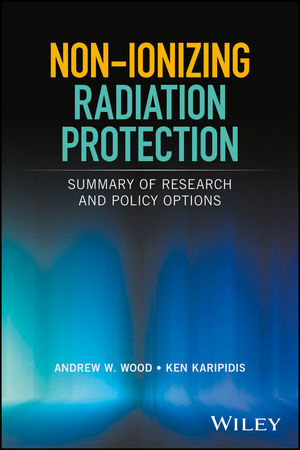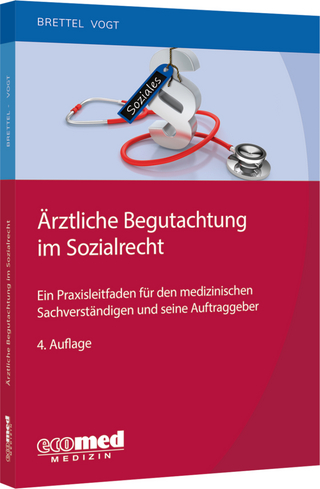
Non-ionizing Radiation Protection
John Wiley & Sons Inc (Verlag)
978-0-471-44681-1 (ISBN)
A comprehensive review of non-ionizing radiation and its public health and environmental risks, for researchers, policy makers, and laymen
This book explains the characteristics of all forms of electromagnetic non-ionizing radiation (NIR) and analyzes the relationship between exposure and its biological effects, as well as the known dose-response relationships associated with each. Taking a uniquely holistic approach to the concept of health that builds upon the WHO definition to include not only absence of disease, but the physical, mental and social well-being of individuals and the population, it reviews established and potential risks and protections, along with regulatory issues associated with each.
The risks to public health of NIR, whether in the form of UV light, radio waves from wireless devices, or electric and magnetic fields associated with electrical power systems, is currently a cause of great concern among members of the public and lawmakers. But in order to separate established science from speculation and make informed decisions about how to mitigate the risks of NIR and allocate precious resources, policymakers, manufacturers, and individuals need a comprehensive source of up-to-date information based on the current scientific evidence. Written by a team of experts in their fields, this book is that source. Among other things, it:
Summarizes scientific findings on the safety of different forms of NIR and the rationale behind current standards
Describes devices for monitoring NIR along with the established and potential hazards of each form
Explores proper protections against UV light and lasers, RF radiation, ELF fields and other forms of NIR
Discusses how to avoid injuries through occupational training or public awareness programs, and how to perform medical assessments in cases of suspected NIR injuries
Considers how to decide whether or not to spend money on certain mitigation measures, based on cost-benefit analyses
Offering expert reviews and analyses of the latest scientific findings and public policy issues concerning the risks to public health and the environment of NIR, Non-ionizing Radiation Protection is an indispensable source of information for manufacturers, government regulators, and regulatory agencies, as well as researchers, concerned laypersons, and students.
ANDREW W. WOOD, PhD, is Professor of Biophysics, School of Health Sciences, Swinburne University of Technology, Melbourne, Australia. Dr. Wood has had many years' of involvement in various research projects on Non-ionizing Radiation and serving on committees dealing with Radiation Protection. KEN KARIPIDIS, PhD, is a senior scientist with the Radiation Health Services Branch, Australian Radiation Protection and Nuclear Safety Agency, Melbourne, Australia. Dr. Karipidis has been a member of various groups and committees providing advice to government and other stakeholders on radiation protection issues.
List of Contributors xxiii
Foreword xxvii
Acknowledgments xxix
Introduction xxxi
1 Overview: The Electromagnetic Spectrum and Nonionizing Radiation 1
Andrew Wood and Colin Roy
Part I Hazard Identification and Assessment: What are the Dangers and How are the Sources Dangerous? 11
2 Hazard Identification: Laboratory Investigation 13
Andrew Wood
3 Hazard Identification: Epidemiological Studies and Their Interpretation 26
Mark Elwood
Part II Ultraviolet (UV) Light 47
4 UVR and Short-Term Hazards to the Skin and Eyes 49
Colin Roy and Peter Gies
5 Ultraviolet: Long-Term Risks and Benefits 67
Mark Elwood
6 UV Guidelines and Protection Policies 76
Peter Gies and Colin Roy
7 UV Measurements 94
Peter Gies and Colin Roy
Part III Visible and Infrared (IR) Light 111
8 Laser and Visible Radiation Hazards to the Eye and Skin 113
Claire Lyngå and David Urban
9 Infrared Radiation and Biological Hazards 134
Stephen Newbery
10 Laser and Optical Radiation Guidelines 145
David Urban and John Javorniczky
11 Laser Measurements 152
David Urban and John Javorniczky
Part IV Radiofrequency (RF) and Microwave Radiation 163
12 Thermal Effects of Microwave and Radiofrequency Radiation 165
Kenneth R. Foster
13 RF Guidelines and Standards 186
Andrew Wood
14 Assessing RF Exposure: Fields, Currents, and SAR 205
Steve Iskra, Robert L. McIntosh and Andrew Wood
15 Epidemiological Studies of Low-Intensity Radiofrequency Fields and Diseases in Humans 226
Mark Elwood
16 Possible Low-Level Radiofrequency Effects 239
Andrew Wood
Part V Extremely Low-Frequency (ELF) Electric and Magnetic Fields 257
17 Electric and Magnetic Fields and Induced Current Hazard 259
Andrew Wood
18 Extremely Low-Frequency (ELF) Guidelines 281
Andrew Wood
19 Instrumentation and Measurement of ELF Electric and Magnetic Fields 298
Thanh Dovan and Ken Karipidis
20 Epidemiological Studies of Low-Intensity ELF Fields and Diseases in Humans 313
Mark Elwood
21 Possible Low-Level Extremely Low-Frequency (ELF) Electric and Magnetic Field Effects? 322
Andrew Wood
Part VI Static Electric and Magnetic Fields 339
22 Static Electric and Magnetic Field Hazards 341
Ken Karipidis
23 Static Electric and Magnetic Field Guidelines 357
Ken Karipidis
Part VII Dealing with Hazard Perception 363
24 Perceived Hypersensitivity: Anecdotal Versus Objective Evidence 365
Adam Verrender, Anna Dalecki, Sarah P. Loughran and Rodney J. Croft
25 Prudent Avoidance 384
Kevin Nuttall, Paul Flanagan and Garry Melik
26 Radiofrequency Fields and the Precautionary Principle 405
Kenneth R. Foster
27 How to Handle Precaution 430
Ken Karipidis and Rick Tinker
Part VIII NIR Injury Prevention and Medical Assessment 443
28 Medical Aspects of Overexposures to Nonionizing Radiation 445
Bruce Hocking
29 Preventive Surveillance Programs 456
Sue Heward, David Urban and Ray McKenzie
Part IX Legal and Community Issues 479
30 Public Consultation and Dissemination of Information. Risk Perception. Public Involvement in Decision-Making Regarding Placement of Broadcast Antennas and Power Transmission Lines 481
Michael Dolan
31 Mitigating Nonionizing Radiation Risks 496
David Urban, Michael Bangay and Thanh Dovan
32 Some of the Controversies Regarding NIR 526
Andrew Wood, Ken Karipidis and Michael Dolan
33 Summary and Prospects 540
Andrew Wood and Ken Karipidis
Appendix A Answers to Tutorial Problems 548
Appendix B List of Suppliers of Survey Equipment 558
Appendix C Websites for Further Information 560
Index 563
| Verlagsort | New York |
|---|---|
| Sprache | englisch |
| Maße | 152 x 239 mm |
| Gewicht | 930 g |
| Themenwelt | Medizin / Pharmazie ► Medizinische Fachgebiete ► Arbeits- / Sozial- / Umweltmedizin |
| Naturwissenschaften ► Chemie ► Physikalische Chemie | |
| Technik ► Elektrotechnik / Energietechnik | |
| ISBN-10 | 0-471-44681-5 / 0471446815 |
| ISBN-13 | 978-0-471-44681-1 / 9780471446811 |
| Zustand | Neuware |
| Haben Sie eine Frage zum Produkt? |
aus dem Bereich


